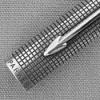Nib smoothing
-
Forum Statistics
354.4k
Total Topics4.6m
Total Posts -
Member Statistics
127,292
Total Members2,585
Most OnlineNewest Member
FreddieKes
Joined -
Images
-
Albums
-
Icones Pupulinianae V
- By fpupulin,
- 0
- 5
- 87
-
4posts
- By Tashi_Tsering,
- 0
- 0
- 40
-
GlenV2
- By GlenV,
- 2
- 1
- 46
-
0 - Oct-Nov 2024
- By yazeh,
- 0
- 0
- 68
-
Misfit’s 6th Album
- By Misfit,
- 70
-


















.thumb.jpg.f07fa8de82f3c2bce9737ae64fbca314.jpg)



.thumb.jpg.331e554113c33fb39d5bf3233878978a.jpg)





Recommended Posts
Create an account or sign in to comment
You need to be a member in order to leave a comment
Create an account
Sign up for a new account in our community. It's easy!
Register a new accountSign in
Already have an account? Sign in here.
Sign In Now